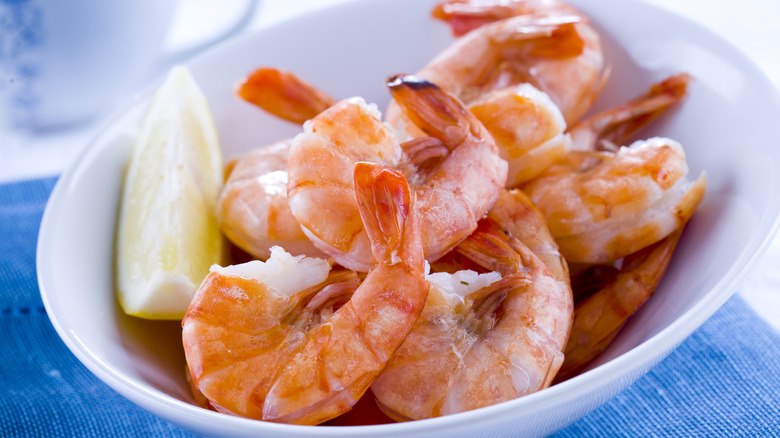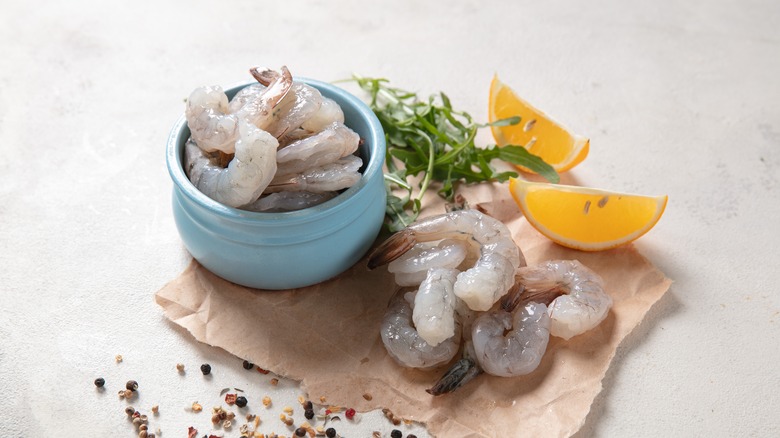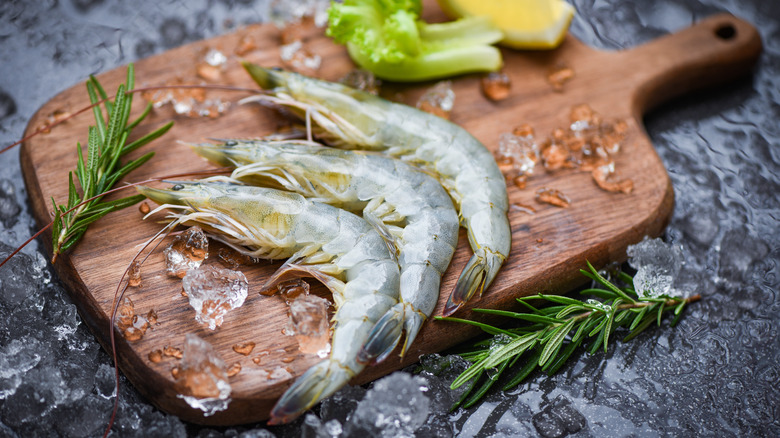How Long Fresh Shrimp Lasts In The Fridge And When To Toss It Out
A classic addition to any cocktail party, shrimp can be hard to resist. A cold bite of sea flavor mixed with tangy sauce is incomparable to any other appetizer. But shrimp can also be insidious. All it takes is a couple of hours in the wrong temperature and your splendid shrimp recipe can go from a refreshing treat to a disastrous mistake. Shrimp only lasts so long in the fridge. And while it is true that the cooked variety has a little bit longer of a shelf-life, you don't want to be taking any chances.
According to the USDA, fresh, raw shrimp can only be refrigerated for up to two days. After this point, any type of shellfish should be cooked or frozen to avoid the growth of bacteria. Freezing fresh shrimp is the safest way to maintain the integrity of the meat, especially if you aren't sure when you will be able to cook it. After the shrimp is cooked, it can last three or four days in the refrigerator. However, you still want to pay attention to the signs of bacteria growth and ensure you can identify when shrimp has exceeded its use.
When good shrimp goes bad
As with most foods, aroma is the biggest indicator that something has gone wrong. The smell of rot is something we have all encountered when opening the fridge at one time or another. Disappointment often goes hand in hand with the knowledge that something you have carefully picked out has gone to waste. But this is a skill that will save you a lot of pain and suffering later on. Whether it is cooked or raw, shrimp has many distinctive attributes that indicate it has gone to the dark side.
Always trust your eyes. If something looks off about your shrimp, it has most likely gone to waste. Bad shrimp typically has a slimy sheen on the surface of the skin. The color of the shrimp will also lose its vibrancy and look even more unappetizing. If you're still unsure, the texture will usually be all the confirmation you need. Slimy or slick to the touch, bad shrimp is unmistakable. Shrimp that is still fresh should be firm to the touch. If there is even a hint of black spots, then that tells you this is the end of the road for the little crustacean. It is time for its journey to end in the trash.
How to store shrimp
Properly storing your fresh shrimp is the best way to combat rot and bacteria. Particularly because shellfish has a smaller window of opportunity than other forms of protein, preserving your ingredients is even more paramount. Raw shrimp should not only be put in the refrigerator immediately but should also be oriented in the correct position inside. The best spot for shrimp is on the bottom shelf because that is the coldest part of the refrigerator. To go the extra mile, try opening the bag of shrimp and laying it on a bed of ice in a bowl.
"When it's all wrapped up in plastic and can't breathe, it gets smelly," Epicurious Food Editor Rhoda Boone said. If you're concerned that the smell of the shrimp will contaminate the fridge and other foods, you can always lay a paper towel over the top. Cooked shrimp should ultimately get the same treatment as the raw stuff. Assign any leftovers to the coldest part of the fridge. Keeping it in an airtight container is also a necessary measure. Shrimp gone bad can be a heartbreaker so it is best to consume it as fast as possible.


